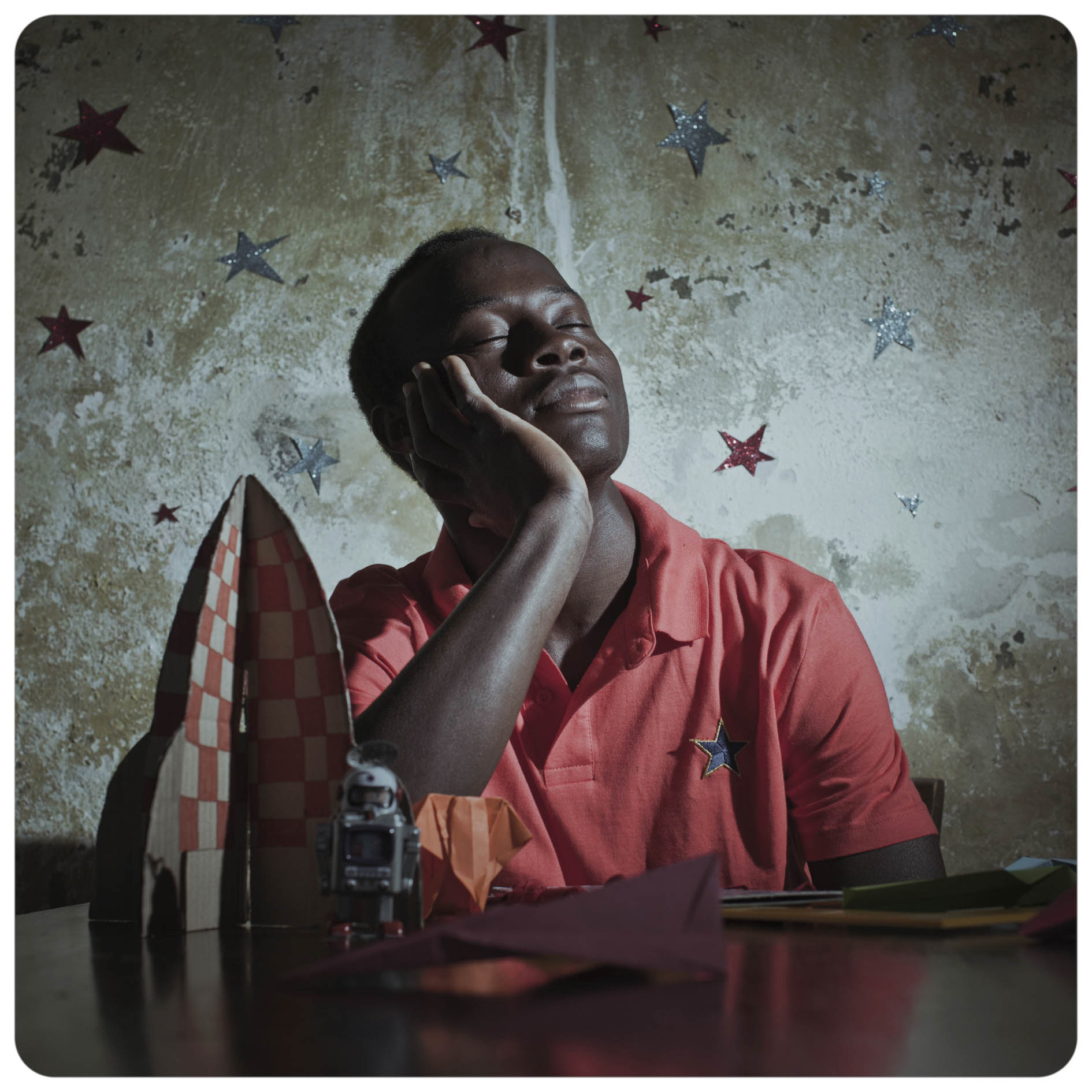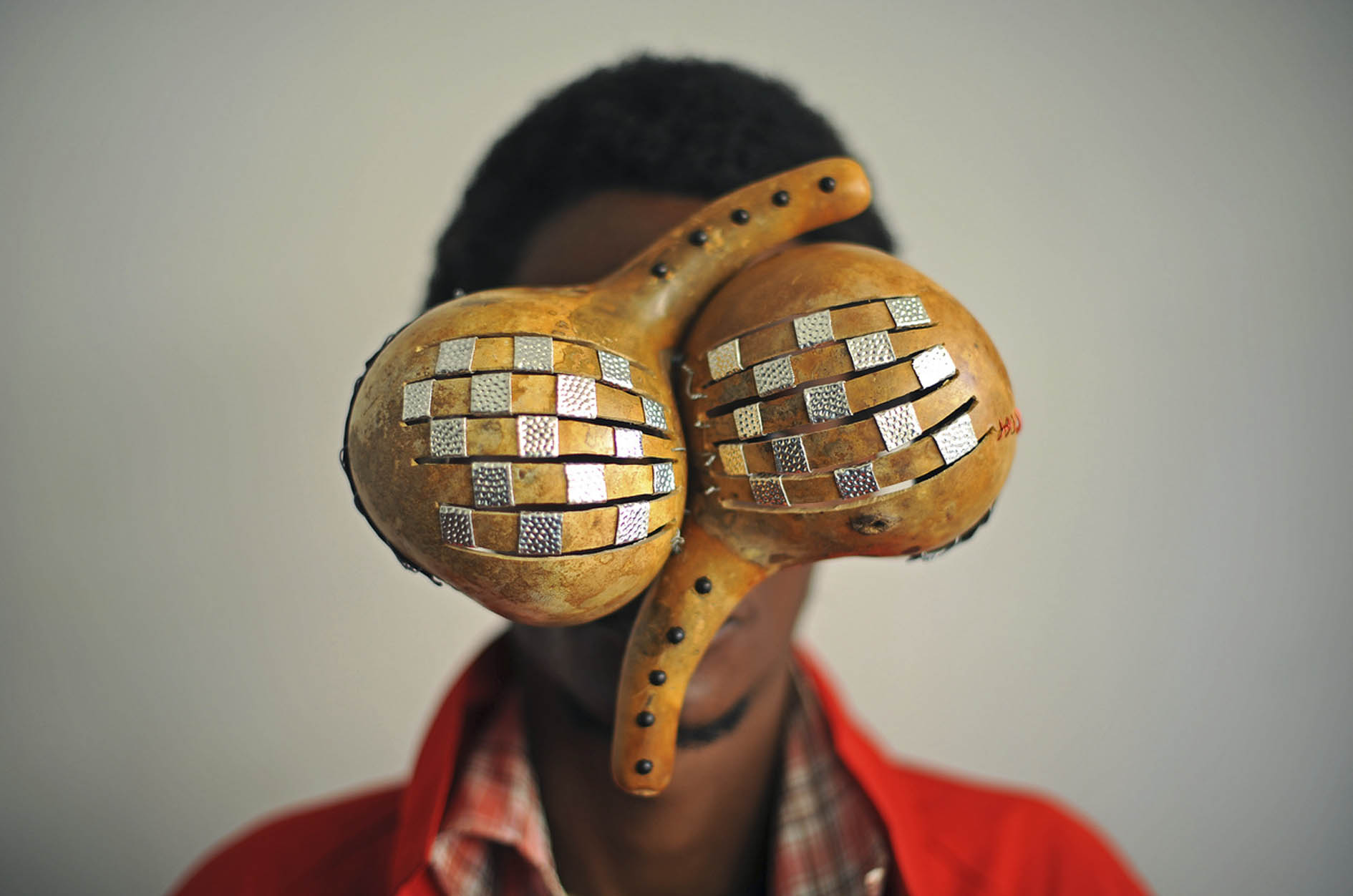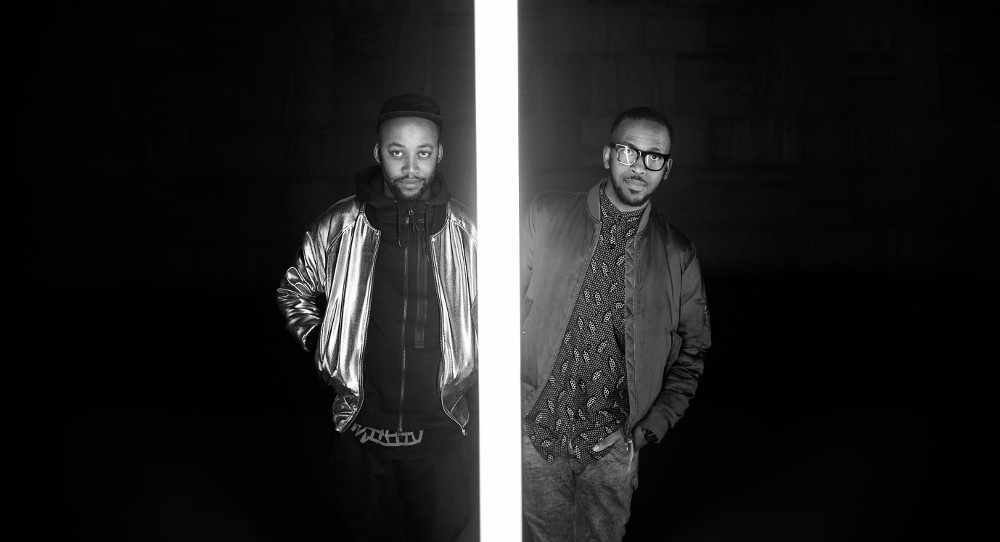The first time I came across the term Afrofuturism was in the early Nineties, and I imagined it to mean anything African and contemporary. But lately the term has been cropping up in visual art, fashion, politics and popular culture, and especially music. The recent documentary, The Future Sound of Mzansi, directed by local artist Spoek Mathambo and filmmaker Lebogang Rasethaba, touched on this from the perspective of South African electronic music.
Rasethaba finds the term similarly confusing: “It’s tricky because Africa is a big and curious concept,” he says. “Millions of people, thousands of cultural groups, languages. And the future isn’t even a thing. There are too many variables.”
And yet the term is becoming more commonplace.

The Afronauts by Cristina de Middel
By the time Cristina de Middel’s haunting photographic series, The Afronauts, appeared at the FNB Joburg Art Fair this year, the book of the same name she had self-published in 2012 was already a collector’s item, fetching £1 000 (R18 000) a copy. The work chronicles a factual but failed Zambian mission to Mars in 1964, a nugget of post-independence folly discovered by the artist in her quest for facts that border on fiction. And yet, I’d wager, there is a stranger, more prosaic phenomenon that made The Afronauts such a runaway success: nothing rocks like “blacks in space”.
This bizarre anachronism of racial profiling sparkled like a Milky Way through the galaxy of this year’s art fair. From Kenya, Cyrus Kabiru’s series of riveting, low-tech recycled seeing machines — think Mad Max-styled ophthalmology — presented both a literal and a metaphoric expression of the inquiry into the great African tomorrow.
Namsa Leuba’s photographic series titled African Queens depicts a cast of black women morphing into extraterrestrial celebrities. And though the theatrics and elaborate attire are distinctly tribal, the absurdity of the garb and accessories propels these “sistahs” out of the kraal and into the sexy realm of the unidentifiable posing object.

Cyrus Kabiru’s Afrofuturism glasses, C-Stunners
In the arresting Ghosts by Jerusalema director Ralph Ziman illuminates apocalyptic gangs toting hand-foraged ammunition. Geared up in shades, turbans and striped neon fatigues, they channel rogue mujahedin on acid. And somehow, these gleaming, magnetic visions are also distinctly futuristic.
European galleries especially provided generous lashings of space-crafts, UFOs and extraterrestrials, along with remarkably eerie ancestral portraits rendered inhuman with beaded-out faces or turquoise orbs where their heads should have been. There were, I observed, zero images of white astronauts — though, to be fair, white subjects were pretty thin on the visual ground at the Joburg Art Fair.
It’s hard to pinpoint just why the Afro-galactic fetish is quite so compelling, but the fact that my souvenir pictures get more Facebook “likes” than toddler snaps affirms the reach of this strange hypothesis, way beyond the cultured cliques of the art world.
Indeed, this zeitgeist oddity is cropping up all over planet Earth, everywhere from street fashion to literature and hip-hop, all under one alluring but quite misleading buzzword: Afrofuturism.
In September this year, both Glamour and Grazia magazines hurried to interview Flux Trends analyst Nicola Cooper on her recent paper on the topic. “We need to talk about Afro-futurism”, demanded Grazia’s headline — a fancier way of saying: “Get a move on, ladies! Blacks in space!”
Neither of these articles had much real grasp on the subject but one can hardly blame them. For starters, the sheer enormity of this continent and its (lest we forget) unknown future surely defies any absolutes — and yet Afrofuturism is a term intrinsically invested with such swagger and, indeed, hope that it stands to reason that the concept would be useful, if not irresistible, to a range of thinkers across political, geographic and social spectra.

Spoek Mathambo and Lebogang Rasethaba’s documentary Future Sounds of Mzansi profiles a new genre of underground music that has taken South African hoods by storm.
Wikipedia insists that Afrofuturism was coined by American academic Mark Dery in his 1993 paper “Black to the Future”, which is a dubious honour. I had used the term before then — as, no doubt, had the highbrow and somewhat precocious American DJ Spooky. But Dery and his posse, notably the dull and predictable feminist Alondra Nelson, did imbue the word with a political gravitas and a useful, perhaps critical, objective.
Afrofuturism was thus defined as “an emergent literary and cultural aesthetic”, combining elements of science fiction, fantasy, Afrocentricity and magic realism with non-Western cosmologies to critique present and historical dilemmas of people of colour — a revisionist lens, if you like, with which to view black culture. What was unfortunate about this definition was that it was explicitly an Afro-diasporic one, covering many perspectives save the most important one: Africa’s.
Nelson, who now heads up gender studies at Columbia University, went further, positioning Afrofuturism as the antidote to a somewhat dated and static view of black culture. “Blackness,” she argued, “gets constructed as always oppositional to technologically driven chronicles of progress.”
Dramatic and dangerous as such a generalisation may be, there is surely validity in Nelson’s argument — for, indeed, were it not at least partially true, its hypothetical converse would hold little allure or, in simpler terms, no one would be the least bit interested in songs, stories or images of “blacks in space”, let alone a white Spanish artist’s photographic essay on a bunch of failed Zambian Afronauts.
Musically, Afrofuturism has raised its voice perennially over the past few decades. Be-bop musician Sun Ra developed an Afrofuturist mythology, emerging in Chicago in the 1950s complete with his Arkestra and recording music that drew from medieval roots and hard-bop rhythms. It simultaneously constructed a narrative linking ancient African culture, specifically Egypt’s, with what was then seen as the cutting edge of the space age, fleshed out with titles that synthesised Afrocentric and space-themed titles. Ra’s film, Space is the Place, shows the Arkestra in Oakland in the mid-1970s in full science fiction regalia.
Funk musician George Clinton also dabbled in Afrofuturism with his albums Return to the Mothership and UFO le Funk.
The wickedly talented Janelle Monáe has taken the Afrofuturist cause to a stylistic and theatric crescendo, using music, film, satire and farce along with references to everything from Hitchcock to Wasp galas to drive her manifesto home.
Having established herself as the “arch-android” on her debut album of the same name, Monáe channels her alterego, Cindi Mayweather, in her video for Many Moons — an exquisitely stylised spoof of a society auction, complete with oh-so-posh pidgin commentary. Only, the items under the hammer are black cyborgs.
Hyperbolic her take may be, but the video’s four million views credit Monáe with making a dense academic manifesto accessible to a generation of adolescent arch-androids. The fact that Boston, home of Harvard University, named October 16, 2013 “Janelle Monáe Day” in recognition of her artistry and social leadership says volumes about the seriousness with which her street-smart farce has been received.
Monáe caricatured herself to emphasise a polemic; others, like Spoek Mathambo, Petite Noir, Nonkululeko Phiri, Moonchild Sanelly and Okmalumkoolkat, challenge archetypes by simply transgressing traditional race-bound barriers and stepping into the taboo techno-lounge of electronica. After all, nothing really rocks like black electro.
On the catwalk, a handful of young designers have used their craft to stage sartorial duels in the prickly spheres of black masculinity and sexuality. Although not expressly Afrofuturist, young British designer Brogan Toyn redefines common contemporary constructions of the male identity in menswear. His S/S13 sportswear collection, Jamaican Me Crazy, combines aggressive hip-hop trends with the coquettish promiscuity of Jamaica’s dancehall queens. The process of deconstruction has the same effect as an Afrofuturist critique and the resulting subcultural mashup presents an in-your-face alternative to standard connotations of masculinity, while still functioning as casual sportswear.

Brogan Toyn’s S/S 2013 collection
I remember a conversation with award-winning Nigerian designer Maki Oh. For her latest collection, the understated young designer had selected her favourite songs and photographed the patterns they created on her equaliser. She had then reconstructed these motifs, weaving reeds into her textiles.
Despite Nelson’s pretext of the barriers blacks face, to Maki Oh the marriage of the organic and the digital was a perfectly natural one, signalling a relaxation of the Afrofuturist paradigm — after all, the seismic shift in access to information (and consequently power) effected by satellite connectivity and relatively cheap android devices has been far too rapid for us to fully comprehend its implications. But, undoubtedly, the Afrofuture is not what it used to be.
The need for both a critical and a revisionist stance on what we have come to understand as African is clearly imperative. History is often intentionally erased to subjugate populations — a technique just as useful to colonial powers as to some of the totalitarian regimes that replaced them. But just as much, I’d bet, simply falls between the cracks of more obvious news.
I was amazed and delighted, for instance, to discover that Lagos was home to a significant punk movement in the 1980s. Just this knowledge reinvented what had always appeared from afar as an aggressive, one-dimensional society that was as foreign to me as an Inuit one. But just a hint of complexity, a testimony of the otherness it contained, suddenly rendered Lagos accessible to me. Aha, I understood — so we are them.
The most tragic irony of any romantic Afrofuturist vision lies in just how brutally social and economic hardships have realised notions of “alien” Africans. Whether it is Zimbabweans exiles in their millions or West Africans clinging to sodden rafts in a stormy Mediterranean, the need to survive away from the safe familiarity of home may be the most commonly shared of all African experiences. Even if geography is constant, the pace of change alone may alienate those unprepared for it. Surviving without rights, as Africans often do, one may feel as no more welcome than one would in another galaxy.
Perhaps the key danger in defining Afrofuturism from the diaspora is that it fails to comprehend fully the forces at play on a dynamic and still misunderstood continent. Whereas “roots tourists” romanticise the heritage they yearn for and come in search of, they underestimate the oppressive grip it can retain on a continent that is unaccustomed to and thus often wary of change.
The supremacy of Western cultures over the centuries has undoubtedly played a key role in distorting, and even retarding, the evolution and progress of Africa’s innumerable cultures — and yet one dare not underestimate the complicit role that African conservatism plays in this process.
Those of us who live here are all too aware of the resistance to change from African authorities on a number of levels. Arts and culture ministries, for example, are often more invested in the preservation of a static heritage than in the more risky and less predictable possibilities of progress. Village elders who may have witnessed very little real change in their African lifestyles are likely to be all the more sceptical and resistant to it. And the esteemed role long-dead ancestors play as ritual consultants in daily decision-making, it can be argued, prohibits transition. They function, if anything, to retain an antiquated and often suffocating status quo.
While blackness, as Nelson asserts, may well have historically been constructed in opposition to technologically driven progress, she fails to recognise to what degree that handicap may be self-inflicted or perpetuated.
Is it really so surprising that communal, agrarian societies have little interest in the space race? Not only might the very thought of it seem absurd to them, its total contempt for the long-trusted limits of possibility wreaks potential anarchy on the hierarchical structures that hold them together.
Though it’s understandable that a language such as isiZulu would have no words for “rocket”, “astronaut” or even “planets”, the fact that “futurism” is an unknown and untranslatable concept is most telling.
The electric shiver of excitement we feel when we glimpse images of Afronauts or Afro-D2s set against glowing moonscapes lies in the implicit liberation from long-suffered taboos, and the resulting sense of relief is surely beyond exhilarating.
If this year’s Joburg Art Fair is anything to go by, Africa is on the verge of a youthquake, in which conventional wisdom may struggle to stand its ground against a swell of personal freedom and individual thought. Patronising as the term “blacks in space” may sound, in reality that privilege has been reserved for only 13 such souls in history — and all of them African-American.
I suspect there’s a baba sitting at a fireplace in some remote rural setting who is quite relieved to hear that. Only unfortunately, there’s a growing galaxy of bright young stars who are just as comfortable making digital art as they would be MMSing baba a zany and elated selfie from Pluto.
So hey, beam me up. The future is bright, black and beautiful.